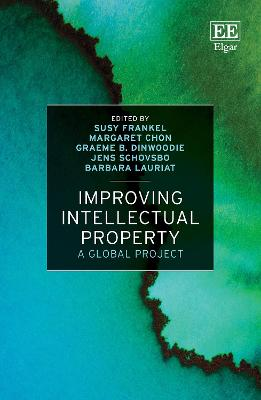We will be closed from 5pm Thursday 17th April for the Easter Bank Holidays, re-opening at 8.30am on Tuesday 22nd April. Any orders placed during this period will be processed when we re-open.

Undertaking the global project of improving intellectual property demands a critical and dynamic evaluation of its parameters and impacts. This innovative book considers what it means to improve intellectual property globally, exploring various aspects and perspectives of the international intellectual property debate and contemplating the possibilities for reform.
Building upon the seminal contributions of Rochelle Dreyfuss, an international team of eminent intellectual property scholars address some of the most pressing questions surrounding the improvement of intellectual property law’s role in promoting innovation. The book explores intellectual property’s shifting boundaries and balance; its increasing relation to other global public goods such as public health; its re-configuration of traditional categories and concepts; its contradictory and incomplete implementation in international law; and its changing institutions. While diverse in subject matter, the individual contributions share the common premise that intellectual property must continually re-assess its foundational assumptions, doctrines, policies, and rationales against evolving political economies, social demands, and technologies.
Thought-provoking and accessible, Improving Intellectual Property will prove an invaluable resource for academics, researchers, and students of international intellectual property law. Its exploration of how intellectual property law might promote innovation in conjunction with national, regional, and global policy goals will also be of interest to practitioners and policymakers.